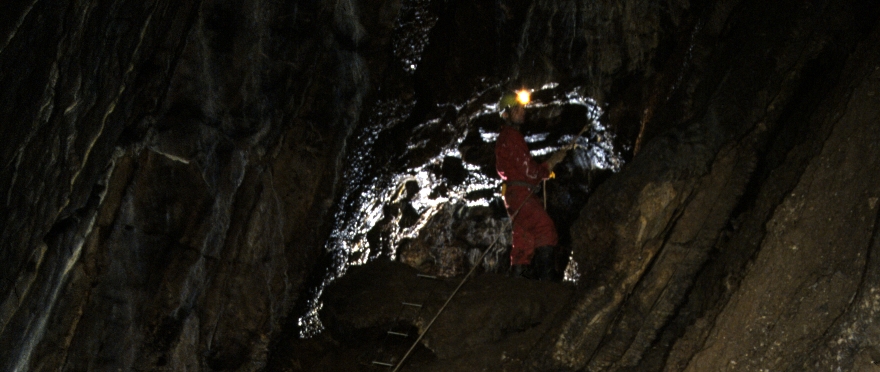The History of Exploration
The Discovery
According to the earliest information that we have, see below, Pen Park Hole was first discovered, by accident, during quarrying for stone in early 1669. Previous accounts of the cave (Rudder, 1779, Tratman, 1963) state that the site was first discovered by lead miners, probably in the early seventeenth century and worked by them at some time before its rediscovery in 1669 and the first recorded descent, on 2nd July of that year, by Captain Samuel Sturmy, a retired mariner, and teacher of navigation from Easton in Gordano. Indeed it was Sturmy himself who first described it as “an old Lead Oare Pit” (Hooke, 1678) and largely on his word that this presumption has been accepted since. Sturmy’s description has been published numerous times (Catcott, G.S. 1792, Hooke, 1678, Lowthorp, 1705, Southwell, 1683) and is the main source for pre-twentieth century descriptions of the cave.
However, there is only one known record that relates to the cave before the 2nd July 1669. This is a letter written by a Mr Thomas Henshaw to Sir Robert Paston, Bart. and dated 21st August, 1669 which alludes to its opening a short time before that date (C.T.D., 1887). This is given below, and, along with the lack of evidence in the cave for lead-working (see below) shows that the cave was not known of until 1669:
"On Sunday I heard the Duke [of Monmouth], after he had related to us the story of Candie, sent by Madame, his sister, that a workman in a quarry of stone in Glostershire, not far from the Severn, going to raise a great stone (he had loosened) on one end, it sunk away downward from him, and had almost carried the fellow along with it, leaving a great hole, which, they trying to fathom, found it 60 fathom ere the plummet reached the bottom; the news of this being sent to the King, one here at London undertook to go down and give an account of it. When he was below he found great vast caverns and a great river 20 fathoms over and eight deep into a lesser cavity where he judged there might be some rake of a mine ; he sent in a miner with a light who was not gone far, but he cried that they were all made, for he had found what they sought for ; but when he had gone a little farther he come thundring back again ready to break his neck, saying he had met with a spirit that so frighted him, he would not venture in again for the world."
This clearly refers to Sturmy’s descent, but says, also, that the discovery, probably the original discovery, was through quarrying for stone, not mining and that it was of sufficient interest for the King to be informed. Sturmy, in a paragraph only given in the relatively rare first publication of his account, (Hooke, 1678) says:
"In pursuance of His Majesties Commands to me at the presenting of my Mariners Magazine, I have with much diligence, some charge and peril endeavoured to discover that great Concavity in the earth in Gloucestershire, four miles from Kingrode, where his Majesties great Ships ride in the Severn. And I find by experience that what has been reported of that place is fabulous, whilst I thus describe it"
The remainder of this account is virtually identical with the more well known version published later by the Royal Society (Southwell, 1683)
